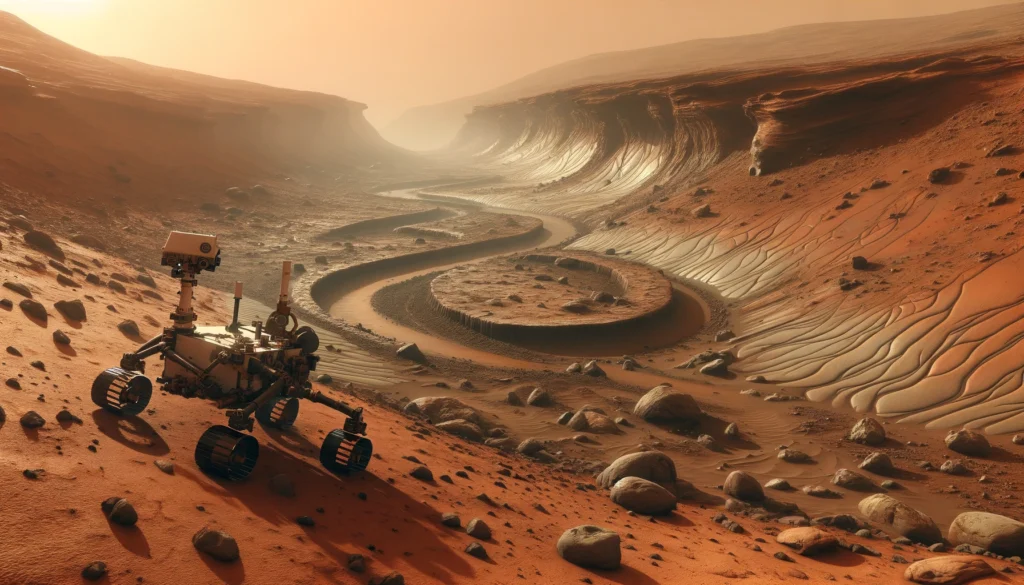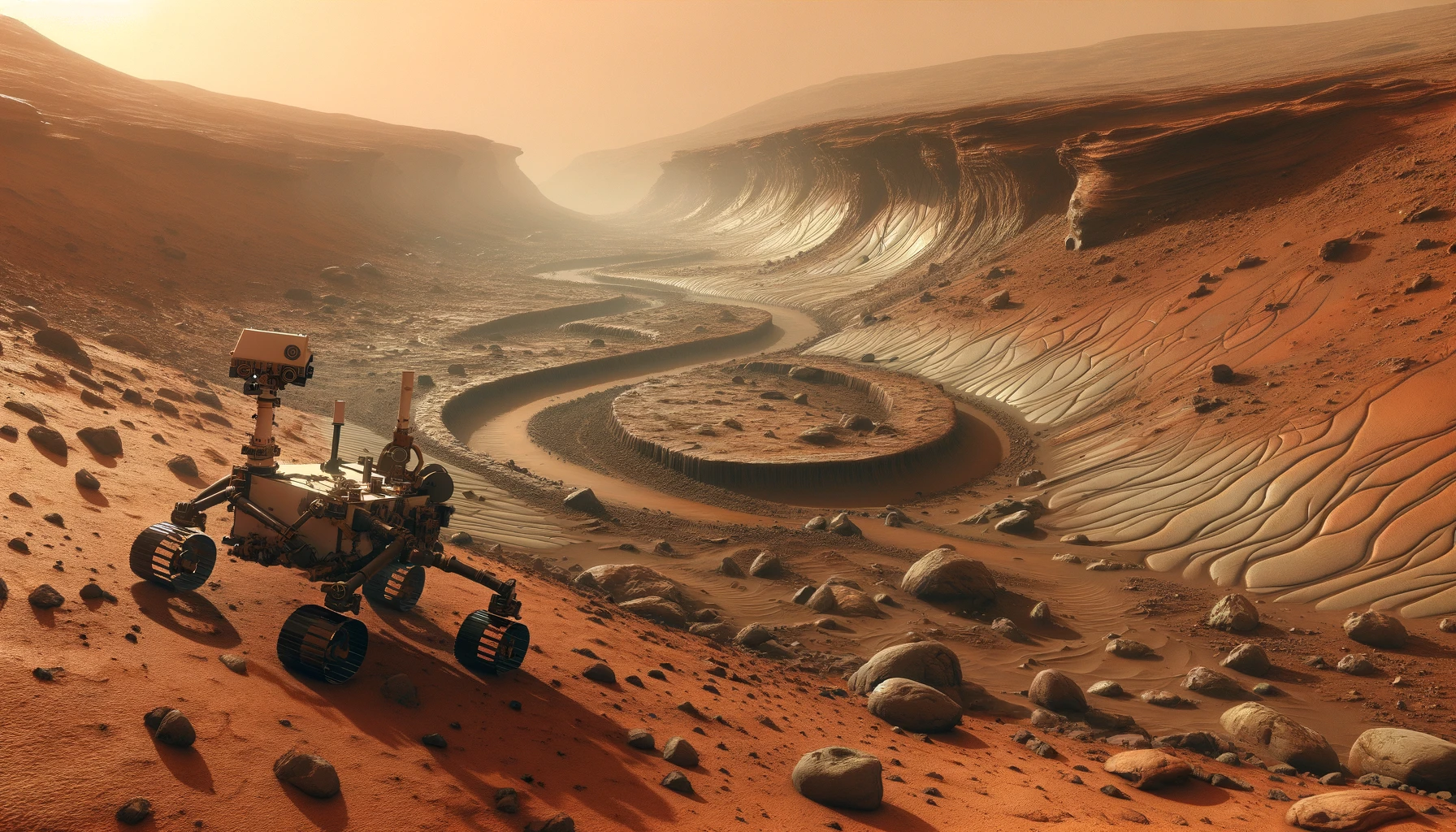NASA, Curiosity Rover, Mars Exploration, Gediz Vallis Channel, Ancient Water on Mars, Martian Geology, Mount Sharp, Mars Climate History, Space Exploration, Red Planet
Dive into NASA’s latest Mars exploration with the Curiosity rover as it investigates the Gediz Vallis channel, seeking evidence of ancient water flows on Mars. Discover how this mission could transform our understanding of the Red Planet’s wetter, warmer past and its geological evolution.

NASA’s Curiosity rover, an iconic symbol of human curiosity and technological prowess, has reached a pivotal area on Mars that promises to shed light on the planet’s ancient water history. The exploration of this new region could revolutionize our understanding of Mars’ past, particularly the duration and impact of liquid water on its terrain.
Unveiling Mars’ Hydrated Past
Billions of years ago, Mars presented a stark contrast to its current desolate, arid state. Evidence suggests that it was once brimming with water, harboring rivers and possibly oceans, thereby offering a more Earth-like environment. Curiosity’s mission to traverse the Gediz Vallis channel—a serpent-like geological feature observed from space—aims to unravel whether this area was sculpted by ancient river flows. This exploration could confirm the presence of liquid water that shaped the Martian landscape far longer than previously believed.
Scientific Investigations and Geological Insights
The intrigue surrounding the Gediz Vallis channel lies in its formation. The channel’s steep sides discount the theory of wind erosion, steering scientists to consider other forces like water-induced debris flows or river activities that could have carved through the bedrock. Investigating the origin of the channel’s boulder-filled terrain is crucial, as distinguishing between materials deposited by water-driven debris flows or dry avalanches will offer insights into the Martian climate’s history.
Since 2014, Curiosity has been meticulously climbing the slopes of Mount Sharp, a monumental peak rising from Gale Crater’s floor. This journey through the mountain’s foothills, layered with geological history, has provided a chronological record of Mars’ climatic transitions, highlighting the interplay between water presence and the chemical constituents essential for life.
Transition from Clay to Sulfates
Curiosity’s route has revealed a transition from clay-rich layers, indicative of significant water-rock interaction, to sulfate-abundant strata, typically associated with drying and evaporative conditions. This sulfate-rich layer is where Curiosity now treads, offering clues to the planet’s drying epochs.
Revising Mount Sharp’s Geologic History
The thorough examination of the Gediz Vallis channel could necessitate a revision of Mount Sharp’s geologic timeline. Erosive forces have sculpted the mountain over millennia, with wind and water erosion exposing the sedimentary layers we observe today. The formation of the Gediz Vallis channel postdates these layers, hinting at a period when liquid water reemerged after prolonged aridity.
Implications of Water-induced Formation
The potential water-driven origin of the channel and its debris is particularly compelling. It suggests a late resurgence of water on Mount Sharp, interrupting an extensive dry spell. This aligns with Curiosity’s findings that Mars’ hydrology experienced intermittent phases of wet and dry conditions, challenging the notion of a linear transition to dryness. The rover’s observations of mud cracks, remnants of shallow lakes, and evidence of massive debris flows feeding into the Gediz Vallis ridge reinforce this episodic water theory.
Challenges and Future Endeavors
Curiosity’s journey to the channel’s vicinity was marked by a challenging ascent, culminating in a comprehensive panorama captured on the 4,086th Martian day (sol) of the mission. This 360-degree view, although in black-and-white, intricately details the channel’s features, including dark sand deposits and adjacent debris piles. These images, primarily captured using the rover’s navigation cameras, have become even more crucial as technical issues limit the use of other imaging equipment.
Conclusion
NASA’s Curiosity rover continues to be at the forefront of Martian exploration, unraveling the planet’s hydrologic history and offering unprecedented insights into its geologic evolution. As Curiosity investigates the Gediz Vallis channel, it not only seeks to answer long-standing questions about Mars’ ancient water but also enhances our understanding of the planet’s ability to harbor life in the past. This mission, bridging past and present, remains a testament to humanity’s quest to comprehend our place in the cosmos.
Read More –
- ESA, NASA Solar Observatory Discovers 5,000th Comet
- NASA Select Terrain Vehicle for Artemis Missions
- NASA Eclipse Mission: Probing the Ionosphere Mysteries with Sounding Rockets
- Nasa Snake Robot- Revolutionizing the Search for Life on Enceladus










